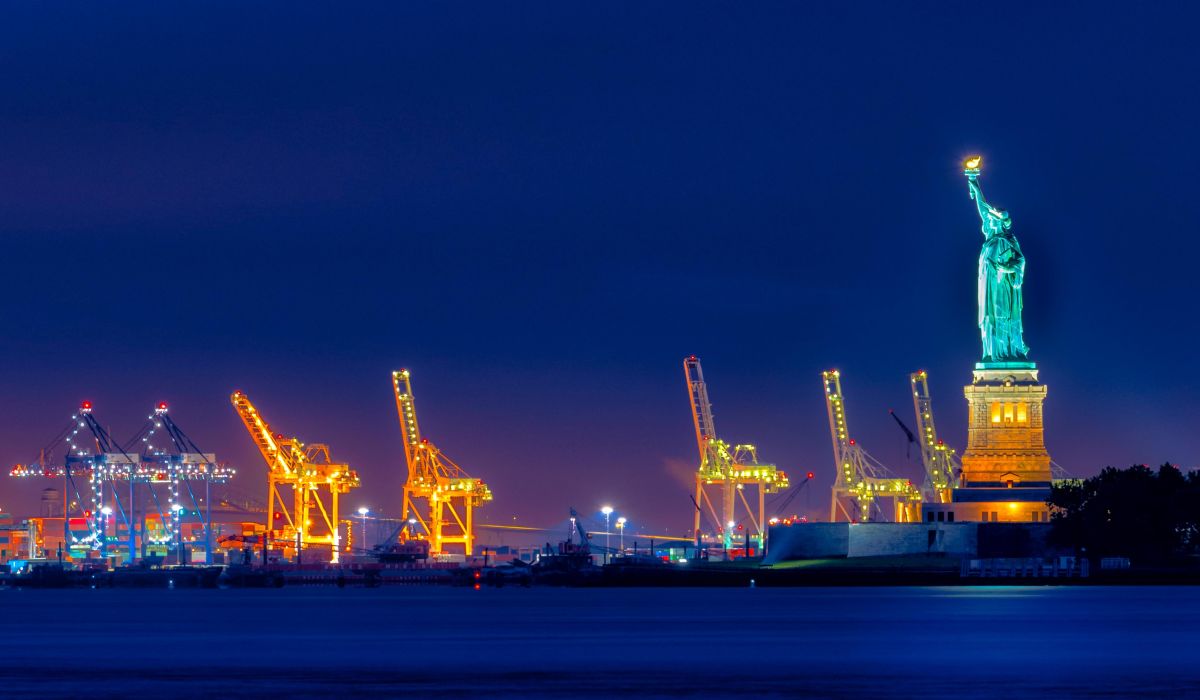A showdown between U.S. longshoremen and port operators over automation could grind East and Gulf Coast ports to a halt on Jan. 15, disrupting supply chains and potentially costing the economy billions.
The International Longshoremen’s Association (ILA), representing 45,000 dockworkers, has threatened to strike again if negotiations with the U.S. Maritime Alliance fail. The conflict centers on the expansion of semi-automated cranes that replace traditional human-operated equipment.
The first ILA strike at 10 East and Gulf coast ports temporarily ended in early October with a contract extension, but it could resume Jan. 15 if negotiations to finalize a new contract fall through.
The strike was initiated after an Alabama port violated the union agreement by implementing automated gate checks to inspect cargo and confirm the bill of lading matches the contents.
Automating that task affects, on average, about 25 people’s jobs at a port the size of the Port of New Jersey, explained Greg Horn, chief information officer for PartsTrader, so it’s a “small percentage of workers,” but the union is concerned automation will further spread to other parts of the process.
“This isn’t about meeting operational needs,” Dennis Daggett, the union’s executive vice president, wrote in December. “It’s about replacing workers under the guise of progress while maximizing corporate profits at the expense of good-paying, family-sustaining U.S. jobs.”
Port operators argue automation is critical to keeping U.S. ports competitive with international hubs like Rotterdam and Singapore. However, a 2023 study by the Center for Innovation in Transport in Barcelona found “no clear evidence confirming that automated terminals outperform conventional ones.”
The stakes are high: East and Gulf Coast ports handle over half of U.S. container traffic. A strike could paralyze these hubs, with experts predicting economic losses escalating from $500 million per day initially to over $2 billion daily if the strike lasts beyond a month.
“A strike that lasts less than a week won’t have a material impact on the broader economy,’’ Mark Zandi, chief economist at Moody’s Analytics, told the AP. “Inventories are generally ample, which will forestall shortages ... However, a strike that lasts much longer than a week will cause increasing disruptions and shortages that will result in mounting economic costs, rising from an estimated $500 million a day to over $2 billion a day if the strike lasts more than a month.’’
Retailers and shipping companies are already taking precautions. Some are rerouting shipments to the West Coast or Canada, while others, like Maersk, are urging customers to collect cargo before the Jan. 15 deadline. Meanwhile, companies like Hapag-Lloyd have implemented strike-related surcharges to offset potential delays.
President-elect Donald Trump has voiced support for the union, criticizing automation’s impact on workers. “The money saved doesn’t justify the harm caused to American workers,” Trump said on social media.
Dockworkers’ wages, a point of contention in previous strikes, are also part of the equation. The tentative agreement reached last fall would raise top hourly wages from $39 to over $60, while many workers already earn six-figure salaries with overtime.













